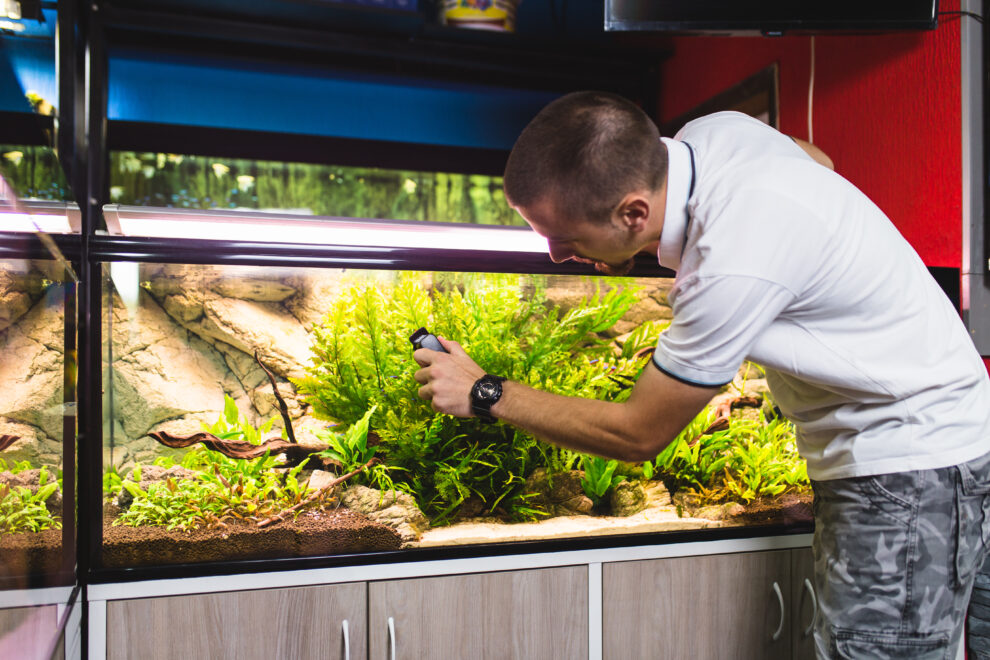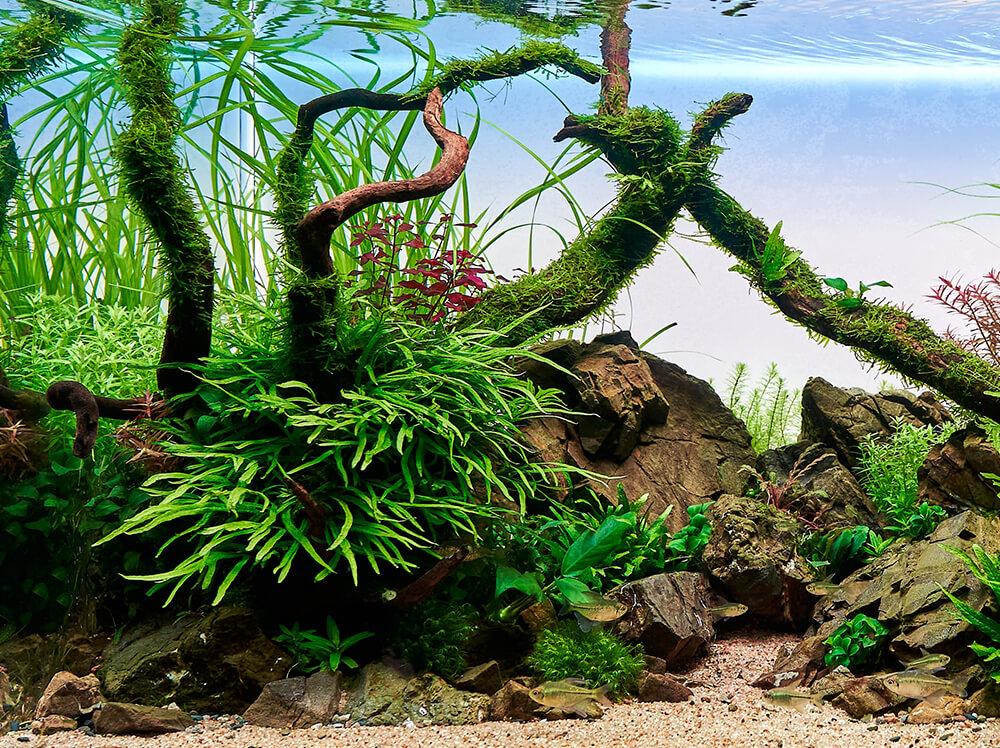Aquascaping: Designing setups in freshwater aquariums
Aquascaping designs have evolved over the years, and there are numerous styles out there that one can adopt. The Dutch style resembles a garden; while the Japanese style is minimalistic and reminds of the delicate balance in nature.
It is not all about pretty looking plants in an aquarium, there are technical aspects that need to be considered, from carbon dioxide levels, filtration and lighting to the actual ecosystem created between the plants and different types of fish.
Nature style aquascaping
Popularised in the 1990s by Takashi Amano, a worldwide famous aquarist and artist, this style is based on simplicity and reminds us of the delicate greens and light colours of nature. The prime aspect of the Japanese style is beauty through imperfection. There is not a great variety of plants in a nature style aquascape, and that is essential, along with a careful selection of aquarium rocks and driftwood. The focus is on peaceful natural landscapes rather than a colourful garden with a variety of plants. Geometrically positioned rocks and Pythagorean formulas are used to set rules and proportions in a Japanese style aquarium.
Dutch style aquascaping
It's all about variety and vivaciousness in a Dutch-style aquascape. Many types of plants can be used, with emphasis on colour variety, foliage density and height. The purpose is to recreate a terrestrial flower garden, with plants placed on elevated terrace-like sections. Not much substrate is left visible and usually, the plants cover at least 80% of the surface, and there are placed in groups running left-right, named Dutch streets. Growing plants also cover the back of the tank.
Jungle style aquascaping and biotopes
The jungle style is described by some as the wild style. The plants are left untrimmed to grow; they are placed erratically in the tank to remind of wildlife Amazonian jungle. More coarse leaf shapes and bold colours are used to enhance the aspect of untamed.
Biotopes are often aquariums with no, or little fish and the emphasis is placed on rocks and driftwood rather than plants. This is the case because biotopes are basically miniature replicas of fixed geographical aquatic habitats. The purpose is not to provide a gardening-like habitat but the precisely mimic nature.
Paludariums are a hybrid type of aquarium, where half of the plants are submerged and half grow above the surface of the water. The tank is partially filled with water and this makes it perfect for growing amphibians. Plants can also bee seen floating on the surface of the water.

Technical aspects of aquascaping
Freshwater aquascaping requires more than an aesthetic touch and harmony. Keeping the plants healthy requires a certain level of expertise or at least in-depth knowledge about the inner works of an aquarium ecosystem. A very commonly used tip is trimming the plants and tying them in place with invisible thread; this ensures no leaves will float about to ruin your beautiful oasis.
Aquarium-safe fertilisers under the form of liquid or tables can be used to accelerate growth, but this cannot happen without photosynthesis, thus carbon dioxide and lighting are required. To provide the full spectrum of light, 2 to 4 watts per gallon of lighting is essential. Timers are used to set a cycle that plants can acclimatise to.
Depending on the number of livestock and the density of the plants additional CO2 maybe be required. Algae distract and they are not a desired supplement to the tank, so algae-eating fish can be introduced such as cyprinids, snails or shrimps. If the fish number is kept to a minimum, there won't be a substantial amount of nitrites introduced in the habitat and also the use of soil instead of gravel to eliminate the carbon dioxide apparatus.
No matter the style you choose for your future aquarium, be it the clean and minimalist Japanese style or the pompous, fabulous Dutch style, you have to keep in mind that a little focus on the technicalities goes a long way. Healthy plants help the ecosystem flourish, and happy fish will complement the beautiful plant microsystem.









